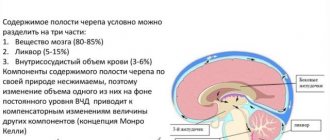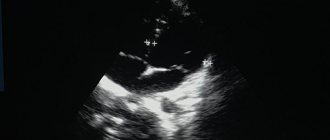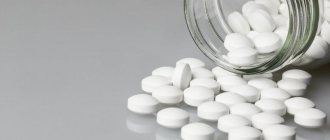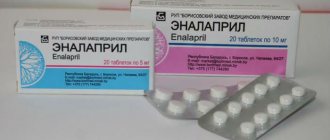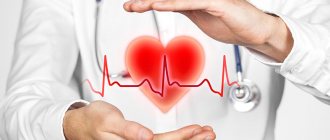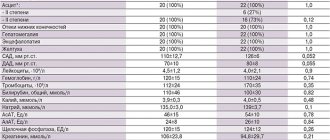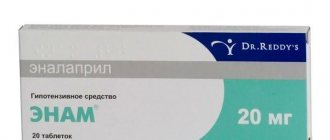The problem of arterial hypotension (low blood pressure) in children has become more common than before. Evidence suggests that hypotension is even more common in children than in adults. Unfortunately, this problem also affects newborns. For a child, blood pressure is considered low, the upper limit of which is no more than 100, and the lower limit is no more than 60. The risk group is schoolchildren, among whom girls are more susceptible to this condition. But blood pressure in children can be not only low, but also high. In this case, it is customary to talk about hypertension. Arterial hypertension, hypertension in children - a persistent increase in blood pressure above the 95th centile of the distribution scale of blood pressure values for a specific age, gender, weight and body length of the child. Normal blood pressure is considered to be values of systolic and diastolic blood pressure that do not go beyond the 10th and 90th centiles.
Causes
It is not always possible to find pathological reasons for a persistent decrease in pressure. This usually happens with primary hypotension, which, however, has its own reasons:
- asthenic physique;
- puberty;
- hereditary predisposition;
- problems during pregnancy and childbirth;
- features in the child’s character, for example, a tendency to depression;
- overwork;
- stress.
Secondary hypertension has causes that are associated with diseases of internal organs and systems: kidney disease, pneumonia, cardiovascular disease, adrenal disease, etc. Also, this form of hypotension can develop due to the use of certain medications, especially considering that children's bodies are most sensitive to medications. But a child’s blood pressure can increase for various reasons. This may depend on hereditary, external factors, and specific age. If a pregnant woman smokes during pregnancy, the risk that the breastfeeding baby will have health problems increases. Diseases of the endocrine system also cause hypertension. Children with VSD are considered potential hypertensive patients. An overdose of some nasal drops leads to a narrowing of blood vessels not only in the nose, but even in the arteries. Because of this, blood pressure increases. It has been noted that high blood pressure is often characteristic of those children who are obese or overweight. Poor nutrition, low physical activity, sedentary lifestyle, stress, school workload. All this can cause health problems.
Normalization of blood pressure using therapeutic methods
Therapy for adolescent hypertension is selected individually by the attending physician.
Typically, to normalize blood pressure, adolescents are first prescribed treatment that does not involve medications. This includes a healthy lifestyle, hardening, proper nutrition and individually selected physical activity.
Among herbal preparations, rosehip infusion is used. It should be borne in mind that herbal infusions gently reduce high blood pressure in adolescents, but do not affect the causes of its occurrence.
Medicines for the treatment of persistent hypertension in adolescents can only be taken as prescribed by a doctor! Especially if there are sharp jumps in blood pressure.
Usually, for teenagers, the attending physician selects gentle medications in small doses. You cannot use such drugs on your own, since most of them have different age restrictions. Properly selected individual therapy not only helps normalize blood pressure, but also improves the functioning of other organs and the general condition of the body.
As a supplement, if there is no diabetes or diseases of the gastrointestinal tract, you can use folk remedies: natural pomegranate, carrot and beet juices, a mixture of honey with cranberries and lingonberries, raw sunflower seeds. Drinking 2-3 glasses of juice a day is enough.
Adolescent hypertension should only be treated by a doctor
Symptoms
If hypotension manifests itself in a newborn, then the parents do not have any special problems, because it is difficult to determine from his condition that there are health problems. This is explained by the fact that the child sleeps a lot, rarely cries, and is in constant peace. Children who have decreased muscle tone, legs and arms can extend more than 180 degrees at the joints. In addition, the following symptoms are observed: a delay in the rate of motor development and impaired swallowing and sucking. Dizziness, fainting, nosebleeds, emotional lability, decreased performance, joint and muscle pain, sudden deterioration in health, and headache may also occur. With a slight increase in blood pressure, the child’s health may be good. Although the child may quickly get tired and irritated. But if the pressure rises strongly, the child will always feel unwell. Among his complaints are the following: headache, dizziness, pain in the heart, palpitations, memory impairment. If a hypertensive crisis occurs. Symptoms such as severe headache, nausea, blurred vision, convulsions, impaired consciousness and others may be observed.
Signs of teenage hypertension
Normal blood pressure in adolescents aged 13-17 years is considered to be 120/80 mmHg. Art. with a deviation of 10 units up or down.
Blood pressure does not remain constant throughout the day. It changes depending on the time of day, the emotional state of the teenager, his general health, etc.
During puberty, the average blood pressure in boys may be slightly higher, and in girls slightly lower than normal. This is due, first of all, to hormonal changes in the body. It is at this age that hypertension is one of the most common diseases, but, as a rule, it is a side symptom of other pathologies.
Adolescents rarely complain of increased blood pressure and control it, so hypertension is often discovered by chance. Parents should be alert to the following symptoms that may indicate hypertension:
- headache;
- increased fatigue and general weakness;
- dizziness;
- decreased vision, frequent blinking.
In these cases, you need to see a doctor and get blood and urine tests to check your cholesterol, hormones, sugar and uric acid levels. Often, the doctor additionally prescribes an ultrasound examination of the liver, kidneys and other organs.
Frequent headaches may be the first symptoms of hypertension in a teenager
Diagnostics
To make a diagnosis, first of all, blood pressure measurements are needed. This is usually done in a sitting position for the first half. The measurement occurs three times, the interval between these is three minutes. Also, it is not done immediately after mental or physical stress, but after an hour has passed. In addition, the following diagnostic methods are used: ECG, ECHO-kg, ABPM, study of autonomic homeostasis, EEG registration, psychological testing, clinical and biochemical blood tests, consultation of the necessary specialists in order to exclude secondary arterial hypotension. To confirm the diagnosis of arterial hypertension, daily monitoring and tests with different types of stress are used. During the study, it is important to identify the cause of the increase in pressure if hypertension is secondary. This is what helps the doctor prescribe effective treatment. If the cause of hypertension is not eliminated, treatment measures will not give the desired effect, the result will be temporary.
Alarming symptoms
If blood pressure is slightly higher than normal, then general health is satisfactory. External manifestations may include irritability and fatigue.
If the blood pressure numbers are very high, then the child feels unwell, he has pain and dizziness, the heart rate increases, pain occurs in the chest, and memory often deteriorates.
There is also malignant AD. In this form, the pressure is very high, and treatment is often ineffective. The risk to health and life is extremely high.
However, the most dangerous situation is the absence of symptoms, which delays diagnosis and treatment.
As you age, your blood pressure may remain above average or rise steadily.
Treatment
Treatment can be medicinal or non-medicinal. If arterial hypotension occurs in a labile form, then preference is given to the second type of treatment, which includes several methods. It is necessary to normalize the daily routine, which includes the child’s correct combination of study and rest. It is important to take timely breaks. This also includes quality sleep at night, as well as daytime rest. Don't forget your daily walks. A child should be in the fresh air for about two hours a day. Meals should be taken four to six times a day. At the same time, there should be a sufficient amount of salt in the food. It is important that the products contain a sufficient amount of nutrients and microelements, which are very important for the child’s body. It is important to maintain optimal water regime. Massage has a good effect. Recommended area: hands, collar area and calf muscles. If such methods are insufficient or childhood hypotension has progressed to a more serious method, the doctor will prescribe the necessary medications. Treatment of hypertension depends on many factors. If arterial hypertension in children and adolescents is accompanied by a slight increase in pressure, non-drug therapy is used. If a child is overweight, it is necessary to reduce body weight. This is achieved by increasing physical activity and normalizing nutrition. If the school assigns a lot of homework, you need to make sure that this does not affect the health and condition of the student. If lifestyle changes do not lead to a decrease in blood pressure or the levels are high, drug treatment is prescribed. Antihypertensive therapy is also prescribed for those children who suffer from diabetes mellitus and chronic kidney diseases. Most of the drugs prescribed for adults are also used for younger patients. But doses and medications are always selected individually.
An invisible disease. Childhood and adolescent hypertension
17 December 2021 09:12
Quantity
My son had an exam yesterday. And a day later another one. Of course, both he and I have stress and insomnia. I measured my blood pressure and his at the same time. One hundred forty to ninety. What is this? Arterial hypertension at 17 years old?! Well, okay with me. And with him!.. The son says that he doesn’t feel anything, everything is fine. Maybe it just happened by chance and will go away tomorrow? And if not?..
We asked a pediatric cardiologist, deputy chief physician for the medical department of the Arkhangelsk Regional Children's Clinical Hospital named after A. P.G. Vyzhletsova Svetlana Nazarenko.
– Svetlana Yuryevna, recently they say that arterial hypertension has become younger and is often found in adolescents and young people.
– Rejuvenated. The number of cases of hypertension is increasing not only in adults, but also in children, especially in adolescents and young men of military age.
– What is this connected with?
– Firstly, more attention has been paid to measuring blood pressure. We used to think: what kind of blood pressure do children have?! Today, the standards of treatment for absolutely all diseases require daily blood pressure measurements in hospitals, regardless of what we are treating or age. The examination standards at the clinic also include measuring the pressure of each child from the first days of life.
- And secondly?
– Blood pressure depends on the activity of the heart, on the tone of the arteries and can change under the influence of physical activity, emotions, and illness. Emotional stress and increased workload can cause increased blood pressure. For example, in physics and mathematics schools, the percentage of children with high blood pressure is 2–3 times higher than in ordinary schools.
At a young age, the cause of arterial hypertension is most often a high level of work of the sympathetic division of the autonomic nervous system. The desire to do everything, the thirst for competition, a feeling of lack of time, aggressiveness, determination, the need to be a leader, a high degree of control over behavior in situations - qualities characteristic of people with hyperactivity of the sympathetic nervous system. It’s probably great if young people strive to get the most out of life, but there is another side to the coin - these are the mechanisms that trigger an increase in blood pressure.
The development of hypertension is also facilitated by low physical activity in children who lead a sedentary, sedentary lifestyle and are overweight. And if in the family it is still customary to constantly add salt and even over-salt food... then all the risk factors for hypertension are evident.
– And then a lifelong diagnosis?..
– In a teenager, increased blood pressure does not always mean stable hypertension, which will remain with him for life. Although there are studies that say: if an increase in blood pressure is recorded at the age of 13 either once or constantly, then the likelihood of developing arterial hypertension in a person by the age of 35 increases 9 times. That is, its mechanisms start early.
– Are there any features of hypertension in children? What is “juvenile hypertension”?
– If we see an increase in blood pressure per year, at five years (I’m not even talking about newborns), this is not at all the same hypertension as in adults. Until 10–11 years of age, hypertension in children is only symptomatic (secondary), that is, you need to look for the disease that causes it. For example, the cause may be heart defects or renal vessels, kidney disease. The child definitely needs to be examined.
Juvenile hypertension involves the age period after 10–12 years , regardless of gender. At this time, all the causes of secondary hypertension have usually already been identified and children who come to us with high blood pressure have exactly the same primary hypertension that occurs in adults.
– Can a child’s complaints “Mom, I have a headache” foreshadow hypertension?
– Very rarely, arterial hypertension can cause headaches - it is not typical for this disease. Of course, if this is not a hypertensive crisis, when a headache is caused by a sharp rise in pressure. According to its symptoms, hypertension is an invisible disease, which is most often detected by chance, for example, when measuring blood pressure during an examination with a doctor. Increased blood pressure is rarely accompanied by complaints; children usually feel well.
– What about “white coat hypertension”?
– There is a lot of “desktop” hypertension, the so-called “white coat hypertension”, as a specific reaction to stress due to tension in the same sympathetic nervous system. In about 30% of teenagers and young adults, this is a reaction to stress at the moment when blood pressure is measured... Then everything goes away.
– Still, are there any specific complaints with this invisible disease?
– There is nothing special. Arterial hypertension, I repeat, is detected by chance, for example, at a military registration and enlistment office, in a hospital where a child was admitted with an injury. Complaints occur more often if hypertension is accompanied by vegetative-vascular dystonia, with which the teenager comes to the doctor. Then there are many complaints: weakness, lethargy, sweating, motion sickness in transport... Vegetative-vascular dystonia is a dysfunction between the control structures of the brain and as a functional disorder in most cases it goes away. Although it may be delayed if there is a predisposition, especially on the part of the mother. Of all childhood periods, vegetative-vascular dystonia is most typical for adolescents.
– There are diseases that are inherited from parents...
– There is no gene responsible for arterial hypertension. It is not genetically transmitted, but if hypertension began early in the parents, then the child can be classified as a risk group with a family predisposition.
– How is the diagnosis made?
– It is impossible to make a diagnosis at one appointment; the pressure itself is very labile. This is not the hemoglobin level - they took a test, saw anemia, prescribed treatment. When visiting a doctor, your blood pressure is measured three times and the average value is taken. Then it is measured after two weeks. To exclude “white coat hypertension”, daily blood pressure monitoring at home is prescribed. Then the device is installed for a day, and the child leads a normal life. Then the fundus and heart are checked, and an ECG is taken. It is very important to have a tonometer and a properly selected cuff for measuring blood pressure at home. There are three sizes: for infants, preschoolers, schoolchildren and adults. If there is no suitable cuff, then it is better to have your blood pressure measured by a doctor in a clinic.
– How is childhood and adolescent hypertension treated?
– In pediatrics, there are big problems in the treatment of arterial hypertension. There are very few clinical studies in the pediatric population. Recommendations for the treatment of hypertension in children are based on adult recommendations. In the instructions for new drugs, in 95% of cases it is written “safety for use under 18 years of age has not been established,” that is, all responsibility for prescriptions rests with the doctor. It will take time for the drugs to become sufficiently researched and migrate to pediatrics. Therefore, we have a larger percentage of not only outdated, but already tested and long-used medications. The second problem is that there are no children’s forms of the drug. And third, there is no scientific data on how early treatment of arterial hypertension with medications will affect the future health of a young patient. After all, a person grows, blood vessels grow and develop, and the heart grows.
– Where does the prevention of arterial hypertension in children begin? What can replace medications?
- We need to move! Swim, hike, ski. With hypertension, static load is harmful: pumping up muscles, jumping, wrestling. It is important to alternate mental and physical activity during the day: to avoid sitting at the computer or watching TV for many hours. Children over 5 years old should spend at least half an hour daily on moderate dynamic aerobic exercise and 30 minutes 3-4 days a week on intense exercise. What is moderate physical activity? This is dancing at a fast pace, walking at a fast pace, playing volleyball or basketball...
We should not forget about factors that provoke hypertension, such as stress, excess weight, and smoking. N.I. Amosov said: “To be healthy, you need your own efforts, constant and significant. There is nothing to replace them!”
The effectiveness of all these measures has been proven in numerous studies, so in most cases it is necessary to resort to drug therapy if lifestyle adjustments for several months do not have an effect.
Material: Elena Antropova
Source of material : magazine “Your Health Formula” No. 38.
https://zdorovie29.ru/healthy-life-style/bolezn-nevidimka-detskaya-i-yunosheskaya-gipertoniya/
Track. news
Prev. news
Symptoms of high blood pressure
The symptoms are similar to hypertension in adults. Signs:
- Headache that becomes more intense in the morning.
- Dizziness and tinnitus.
- Psycho-emotional disorders: the child becomes irritable, mood changes sharply.
- Fatigue and general weakness.
Of course, treatment is necessary in most cases.
But if hypertension occurs due to age-related hormonal changes, then after 17 years this syndrome goes away on its own. Quite often, parents do not even know that their child has high blood pressure. And poor health and behavioral changes are attributed to the transition period. If the increase occurred due to certain pathological conditions, then therapeutic therapy is simply necessary. In order to determine whether a child has a systematic increase in blood pressure - one measurement is not enough, at least a three-fold study is needed. Hypertension in adolescence is common.
Disease prognosis
If the patient strictly follows all the recommendations of the attending physician, the prognosis of the disease is positive. Recovery occurs in a short time. Difficulties in treatment can be caused by primary hypertension, i.e. a pathology that has developed independently and is not a complication of another disease. In this case, the outcome depends on the effectiveness of the pathology that provoked its appearance.

